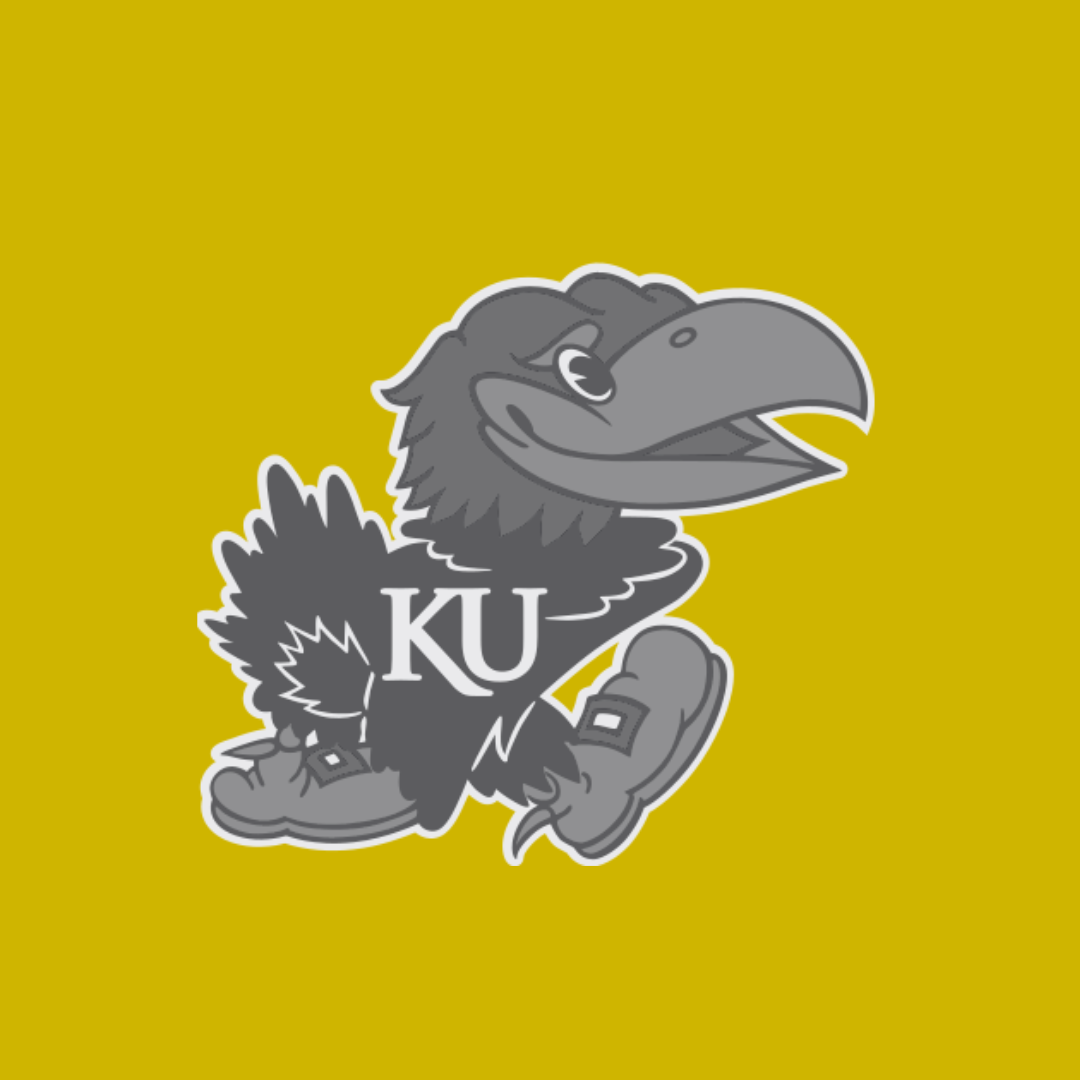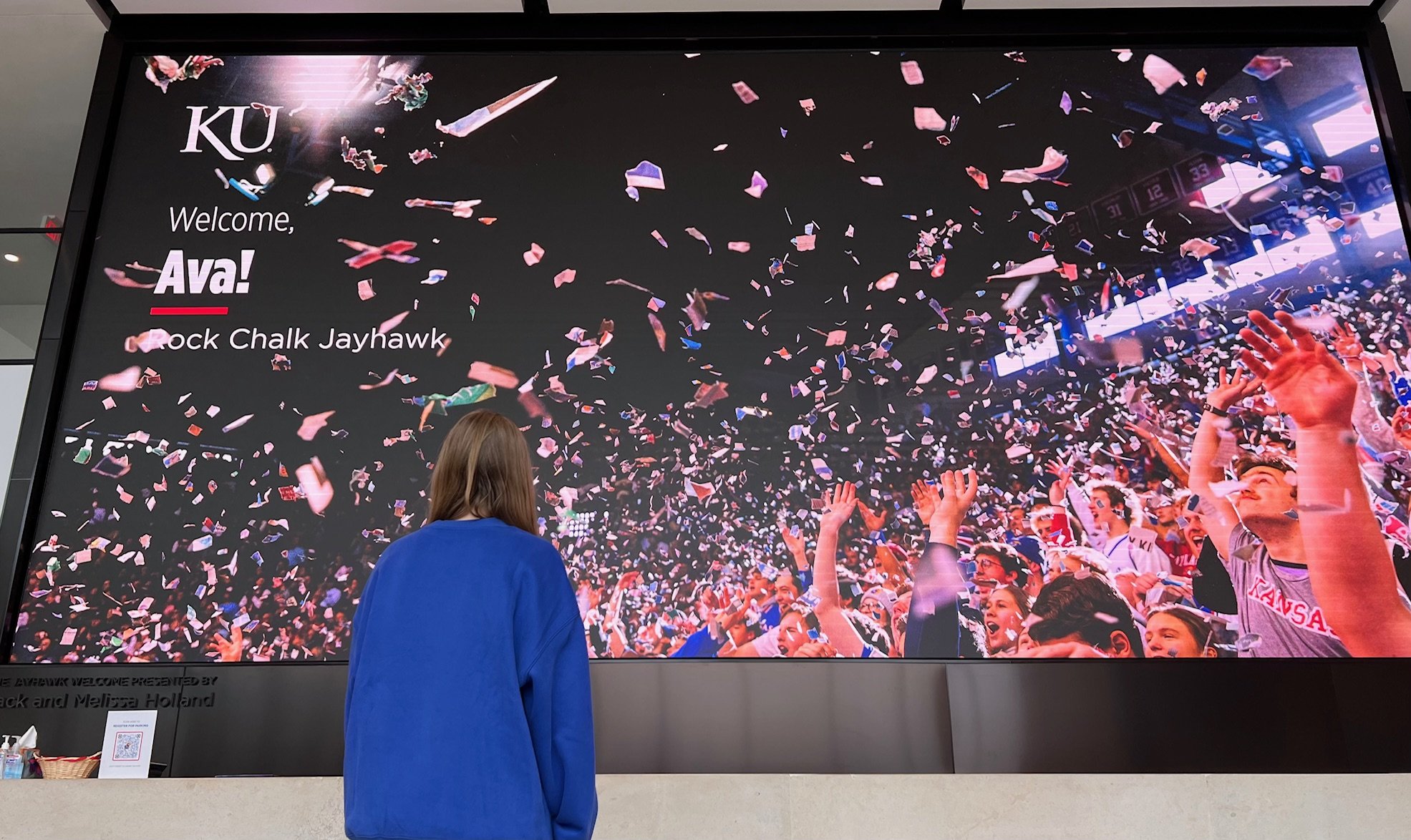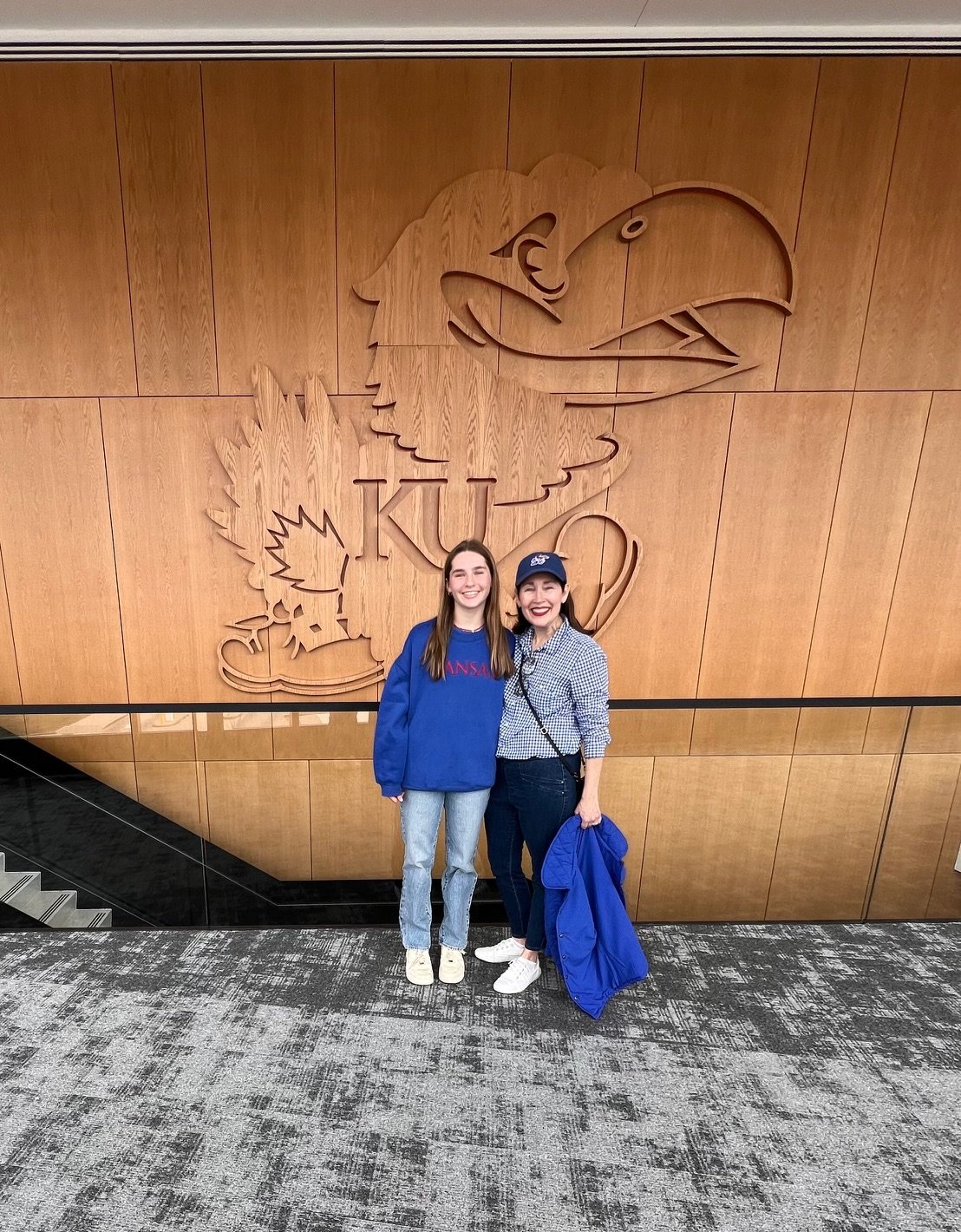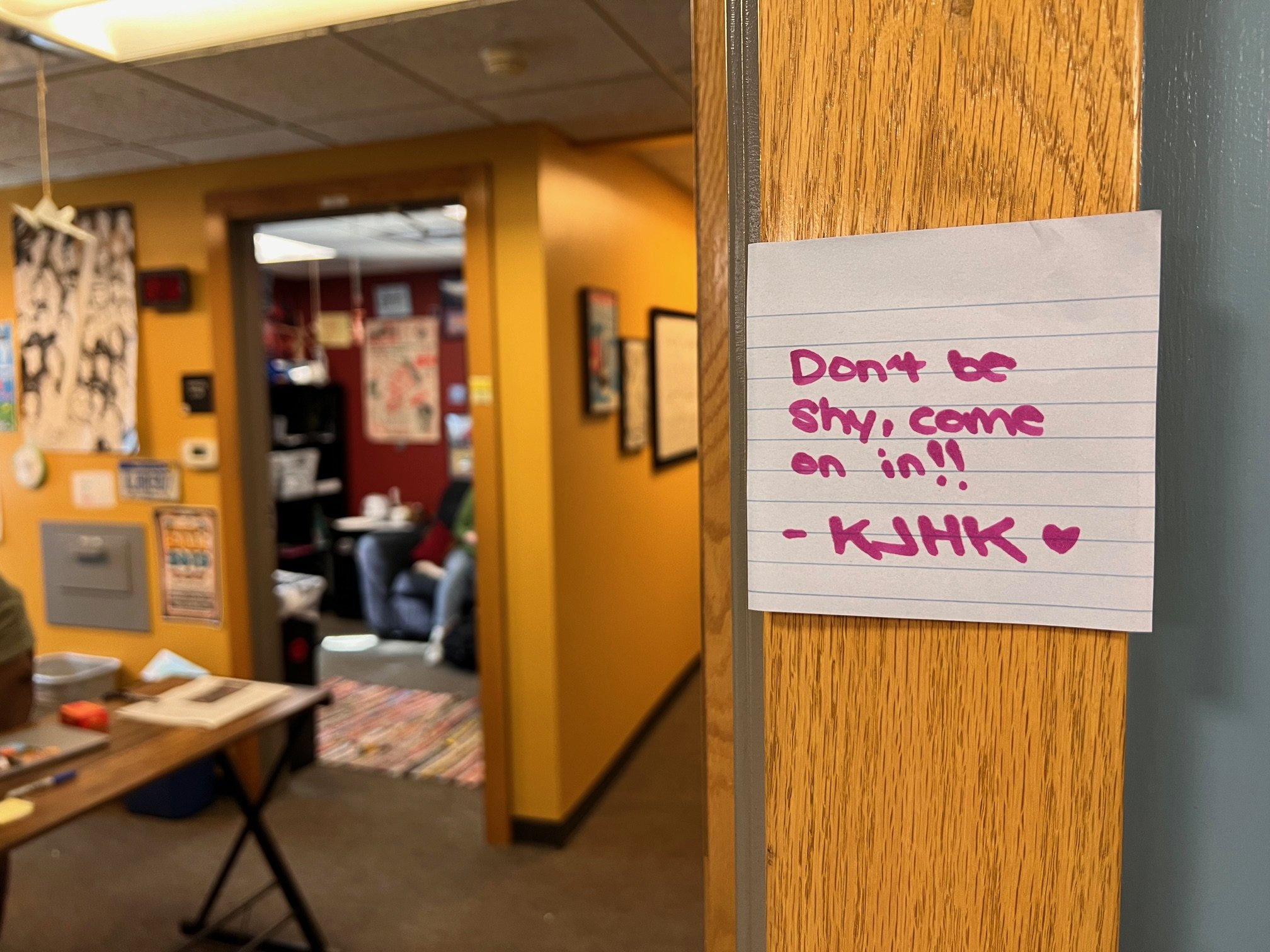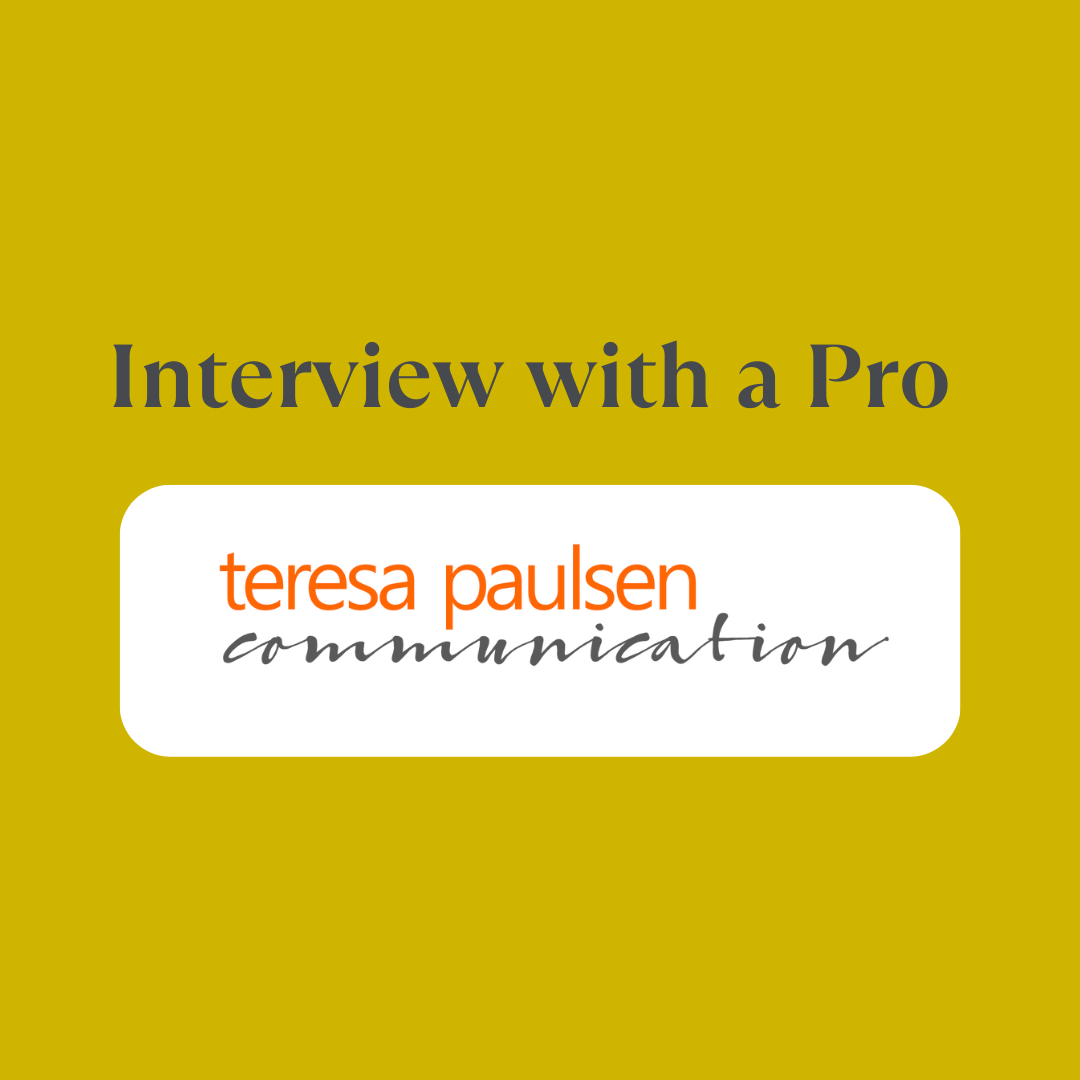Lessons from a KU Visit
How does a large university make one prospective student feel welcome?
This Week …
Diagnosing the magic of a KU welcome
An “Interview with a Pro” Series Debut: Teresa Paulsen weighs in on the WK Kellogg’s “Cereal for dinner” Fallout
What NATO and Brand Managers have in common
1. How to Welcome a Student — Jayhawk Style
Notes from a College Visit:
In the late 1980’s, Meg Brudney took me to visit the University of Kansas. I fell in love and selected KU for my college education. Last week, I took my daughter to visit Lawrence for her first college visit. I enjoyed the trip as a parent, an alumna, but also as a communicator.
My question: how does a campus of 26,000+ students make a high school student feel welcome and special? It’s all in the signs — from large to small.
Welcoming Culture:
Facilities: KU has strategically prioritized making visitors feel welcome. They invested $21 million in a 30,000-square-foot Jayhawk Welcome Center, that opened in 2023. The Welcome Center is the starting point for campus visits by prospective students, their families, and visitors to campus.
Atmosphere: Everyone we met was friendly and eager to engage with each student.
Personalization:
Tailored technical surprises include a 34-foot-tall video screen with the visiting student’s name on a campus hero image (First image — where the staff behind the desk duck to allow a photo with only the student); interactive digital displays where students explore degrees, campus activities, and famous alumni with easy to use touch screens that broadcast well-produced videos; and a photo booth, donated by Patty and Charles Garney, with a green screen paired with a virtual background library.
Brand Representation:
The Welcome Center plays a pivotal role in making the storied brand of the university approachable and helps demystify the university experience. (Second image)
Tradition:
Invitations to explore academic and athletic traditions help to differentiate the university, making it more than just an educational institution but a place where individuals can find a sense of belonging and identity.
Intangibles:
The aspects of the university that are not easily quantified or planned, such as the warmth of greetings throughout campus — like the small Post-it note at the campus radio station (Third image) — or the upbeat atmosphere of Lawrence stores and restaurants build a layered experience that the university is inviting you to come.
KU and Lawrence made an important first impression for one prospective student.
2. The Debut of “Interview with a Pro”
The Pro:
Teresa Paulsen weighs in with expanded analysis on how a company is handling consumer backlash.
Interview Topic Background:
There is more to cover on the ongoing WK Kellogg’s “CerealGate” incident. Since the initial public backlash, WK Kellogg’s has not pubicly responded.
From Salon, March 10: "Let them eat cereal": How accusations of "greedflation" fueled consumer ire against Kellogg's
On Feb. 21 — WK Kellogg Co. CEO Gary Pilnick also suggested customers eat cereal for dinner, likely because instead of positioning it, as the advertisement had, as a little treat, he suggested it as a solution for families feeling throttled by food inflation.
This period of sustained grocery inflation, even as the price of other goods comes down, has caused frustration for a lot of American customers.
Pilnick’s comments have led to widespread calls for a boycott of Kellogg’s products
Analysis from Truescope points out, among other things, that some consumers are weighing in online with a different perspective: they enjoy eating cereal for dinner.
Meanwhile, WK Kellogg's has enjoyed a share price increase of 15% year to date.
Watch my interview with Paulsen:
3. Standardized Clarity: NATO’s Phonetic Alphabet, Codes, and Signals
Did anyone catch this is Newsletter #Niner?
I can’t explain it, but I love the military’s use of NATO’s phonetic alphabet, codes, and signals. Here is a list. The history of standardizing written, spoken, and visual communications fits in very well with this newsletter’s goal.
The NATO alphabet became effective in 1956 to ensure clear communication, enabling forces from many nations, with different accents and pronunciations, to communicate in a way that is understood by all.
Next time someone fights you on establishing a style guide or unifying your brand template library, send them to NATO. (Roger that.)
See you next week …
Before we go, I did promise an update on the Google incident with backlash sparked by the inaccurate answers given by its Gemini AI.
CEO Sergey Brin said Google "definitely messed up" with Gemini's image generation and CEO Sundar Pichai also apologized for the incident and promised "structural changes."
Yahoo News: Google's Gemini firestorm shows the risks of the company's race to catch up with its AI rivals
What topics would you like to see in The EO Report?
Email me ideas! erin@claritychannels.com
Feel free to share this newsletter with other communicators.
